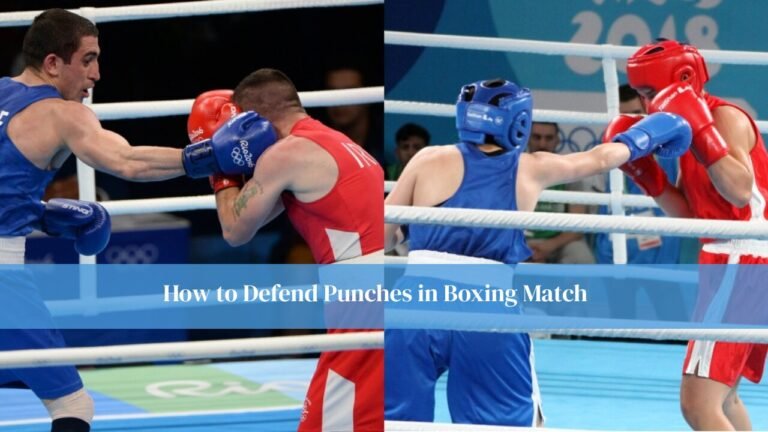In the high-stakes world of professional boxing, every movement, punch, and defensive maneuver can alter the course of a fight. Among the many pivotal moments that can unfold in the ring, the act of taking a knee stands out as both strategic and symbolic. Though it lasts only a few seconds, this gesture carries layers of meaning that extend far beyond its brief execution. For some, it’s a sign of tactical intelligence; for others, it may suggest vulnerability. Regardless of perception, taking a knee is often a turning point in the narrative of a match, and its implications ripple through the sport, influencing not only the fighters involved but also the audience, referees, and boxing history itself.
This article examines what taking a knee truly means in the boxing world, breaking down its rules, its role as a tactical choice, the psychological and physical impact on fighters, and how it has been perceived in famous matches. It also explores the ongoing debate about whether this act is a mark of strategy or a blemish on a boxer’s fighting spirit.
What Does Taking a Knee Mean in Boxing
Under the official rules of professional boxing, taking a knee refers to the deliberate action of a boxer lowering themselves so that one knee touches the canvas during a fight. The moment this occurs, the referee is obligated to begin a mandatory count, much like they would for a knockdown. The rules are precise: the boxer is considered down if one knee and one glove, or both gloves, are in contact with the canvas. This applies whether or not the action was caused by a punch.
While the physical act may appear straightforward, its intention can vary widely. Some boxers take a knee to create a short break in the action, giving themselves a few precious seconds to recover physically and mentally. Others may do so to signal to the referee that they need protection from further immediate damage. Regardless of motive, the action serves as a clear signal to spectators, judges, and the opposing corner that something significant is unfolding inside the ring.
Strategic Use in Matches
Boxing is a sport of calculated risks. A single misjudgment can lead to devastating consequences, which is why strategic awareness is as important as physical skill. For some fighters, taking a knee is part of that strategy. It can act as a controlled pause, allowing them to reset their breathing, sharpen their focus, and adjust their game plan before the fight resumes.
In the heat of an intense exchange, adrenaline can cloud judgment. Fatigue can set in, and a boxer’s timing or defense may slip. By taking a knee, a fighter grants themselves a controlled moment of reprieve, a mental and physical timeout that can ultimately help them return to the fray with renewed composure.
Breaking the Opponent’s Momentum
Momentum is a critical and often intangible force in boxing. When a fighter is on the attack and landing clean shots, their confidence grows, and their rhythm becomes difficult to disrupt. In such moments, the defending boxer can feel overwhelmed, struggling to respond effectively. Taking a knee in these situations can serve as a tactical disruption and intentional interruption in the flow of the opponent’s offense.
By breaking the momentum, the defensive fighter forces their opponent to reset, potentially cooling their aggression and giving the recovering boxer a chance to prepare for the next wave. This tactic requires keen situational awareness; a poorly timed knee can appear as a retreat, but a well-timed one can completely change the dynamic of a round.
Recovering from a Precarious Situation
Even the most skilled fighters can find themselves in danger. Whether from a perfectly timed punch, an accumulation of body shots, or sheer exhaustion, moments of vulnerability are inevitable. Taking a knee can serve as a safeguard against these threats.
When a boxer is hurt, trying to remain upright can invite more damage. In contrast, voluntarily going down prompts the referee to intervene, granting the fighter valuable seconds to recover. This can mean the difference between being knocked out and surviving to continue the match. Many experienced boxers know that protecting themselves in this way can ultimately extend their career, preserving their health for future fights.
Considerations and Risks
Taking a knee is not without its drawbacks. Judges and audiences can interpret it in different ways, and not all interpretations are favorable. Some may view the move as a sign of weakness or a lack of determination to fight through adversity. Others may see it as a calculated maneuver to protect oneself and fight smarter.
In professional boxing, perception can be as influential as performance. A boxer who takes a knee too often or without clear necessity risks damaging their reputation. Moreover, the referee’s count does not stop until the fighter is ready to resume or the count reaches ten, meaning that misjudging the timing can lead to an unintended stoppage.
The Physical and Psychological Impact
The decision to take a knee can have lasting consequences, both physically and mentally. On a physical level, it allows a fighter to recover from heavy blows, regain breath, and reduce the immediate risk of injury. On a psychological level, however, it can test a fighter’s mental strength and resilience.
For the boxer, taking a knee can serve as a strategic regrouping point, but it also requires humility and discipline. It’s an acknowledgment that, in that moment, self-preservation outweighs relentless forward aggression.
For the opponent, seeing a rival on one knee can trigger a surge of confidence, encouraging a more aggressive follow-up. Yet, seasoned fighters know to remain cautious many comebacks have been launched immediately after such moments of perceived vulnerability.
For the audience, reactions are mixed. Some spectators appreciate the tactical intelligence and self-awareness involved. Others, especially those who value constant forward pressure, may see it as diminishing the fight’s intensity.
Famous Instances of Taking a Knee
Throughout boxing history, there have been notable moments where taking a knee influenced the outcome of a match. In certain championship bouts, fighters have used this tactic to survive late-round assaults and mount successful comebacks. In others, a well-timed knee has prevented serious injury and prolonged a fighter’s career.
These historical examples serve as reminders that the act is not simply about stepping back; it can be a critical, fight-altering decision. Analysts often revisit such instances to evaluate whether the move was one of strategy, necessity, or a combination of both.
The Controversy Surrounding Taking a Knee
Few actions in boxing ignite as much debate as taking a knee. The controversy lies in the tension between the sport’s culture of toughness and the growing emphasis on fighter safety.
Critics argue that taking a knee can be a sign of surrender. They see it as undermining the warrior spirit that boxing has long celebrated, questioning the mental and physical durability of the fighter who employs it. Some go as far as to call it an unsportsmanlike way to break an opponent’s rhythm.
Supporters, however, view it as an intelligent and necessary aspect of modern boxing strategy. They argue that the health and long-term safety of athletes should take precedence over outdated notions of invincibility. For them, taking a knee can be an act of courage a recognition that avoiding unnecessary damage is a mark of professionalism, not weakness.
The Role of the Referee in This Scenario
Referees are tasked with ensuring the fairness, safety, and integrity of every bout. When a boxer takes a knee, the referee’s role becomes pivotal. They must immediately begin the count while closely observing the fighter’s condition. If a boxer appears unable to defend themselves adequately after rising, the referee has the authority to stop the fight.
The referee’s decision in such moments can alter the course of the match, influence careers, and even affect public perception of the sport’s commitment to safety. Their judgment balances the fine line between allowing a fighter to continue and preventing unnecessary harm.
Conclusion
In boxing, taking a knee is far more than a brief pause in the action; it is a decision that reflects a fighter’s judgment, strategy, and understanding of their own limits. It can disrupt momentum, preserve health, and change the trajectory of a match. At the same time, it remains a point of contention, illustrating the ongoing push and pull between traditional views of toughness and modern approaches to athlete safety.
As boxing continues to evolve, the practice of taking a knee will likely remain a strategic and sometimes controversial element of the sport. What is undeniable is its significance not only as a physical act but as a psychological and cultural marker in the sweet science.
FAQs
What happens if a boxer takes a knee without being hit?
The referee starts a count, treating it like a knockdown. It shows the boxer needs a break, which can affect scoring.
Can taking a knee save a boxer from a knockout?
Yes, it can give them time to recover and avoid further hits that could lead to a knockout.
How does the audience typically react to a boxer taking a knee?
Reactions vary. Some respect it as a strategic move, while others see it as a sign of weakness.
Related Post:




